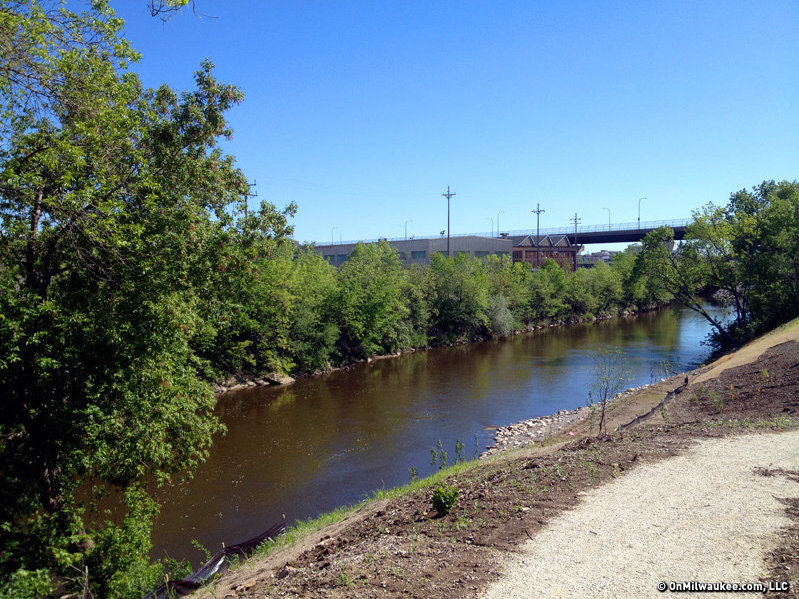Today, Milwaukee Riverkeeper released its fifth Annual Milwaukee River Basin Report Card, a detailed summary of the health of the Milwaukee, Menomonee and Kinnickinnic River watersheds. Milwaukee Riverkeeper uses the report card to identify potential problems and opportunities in our watersheds, and to guide where we can most effectively advance policy measures and protections to better achieve a swimmable, fishable watershed.
Overall, the Milwaukee River Basin received a C- in 2014, slightly lower than 2013’s overall grade of a C, but up from 2011’s overall D+. While the best grade for a watershed was a B+ (Cedar Creek) and the lowest was a D+ (Menomonee River), results from the last half decade of monitoring have been fairly consistent. This annual report card demonstrates that we have come a long way in improving certain aspects of the Milwaukee River Basin's water quality, and focuses in on where we still have a lot of work to do to achieve clean water.
The Milwaukee River Report Card helps determine where in the watershed action is most needed to reduce pollution levels and to improve water quality and aquatic habitat. The report card also highlights how individuals can take part in the effort to improve our waters through changing behaviors such as reducing application of lawn chemicals and road salt or by volunteering to monitor water quality.
The report card analyzes data gathered by Milwaukee Riverkeeper’s 90 volunteer stream monitors in 2014, Milwaukee Metropolitan Sewer District’s (MMSD) surface water monitoring team, as well as Wisconsin Department of Natural Resources (WDNR) staff. The basin is graded on water temperature, dissolved oxygen, pH, turbidity, phosphorus, chloride, conductivity, macroinvertebrates and bacteria. Watershed grades are determined by averaging grades for all parameters, and the overall Milwaukee River Basin grade is determined by averaging grades from all watersheds.
The Milwaukee River Basin's phosphorus, conductivity and bacteria levels all received failing grades, consistent with results from 2013 and 2012. In fact, all three river watersheds received poor grades for conductivity and bacteria. The Kinnickinnic River Watershed was the only one to receive higher than an F for phosphorus (receiving a C+).
In addition to the results of our water quality analysis, this year our report card also elaborates on the impact bacteria, phosphorus, conductivity and chloride have on our local streams. The main culprit causing high phosphorus levels is agricultural runoff, while poor chloride levels are largely the result of road salt runoff. Low grades for bacteria are likely the result of deteriorating pipes and "cross mixing" within sewage and stormwater infrastructure, as well as agricultural and urban stormwater runoff.







